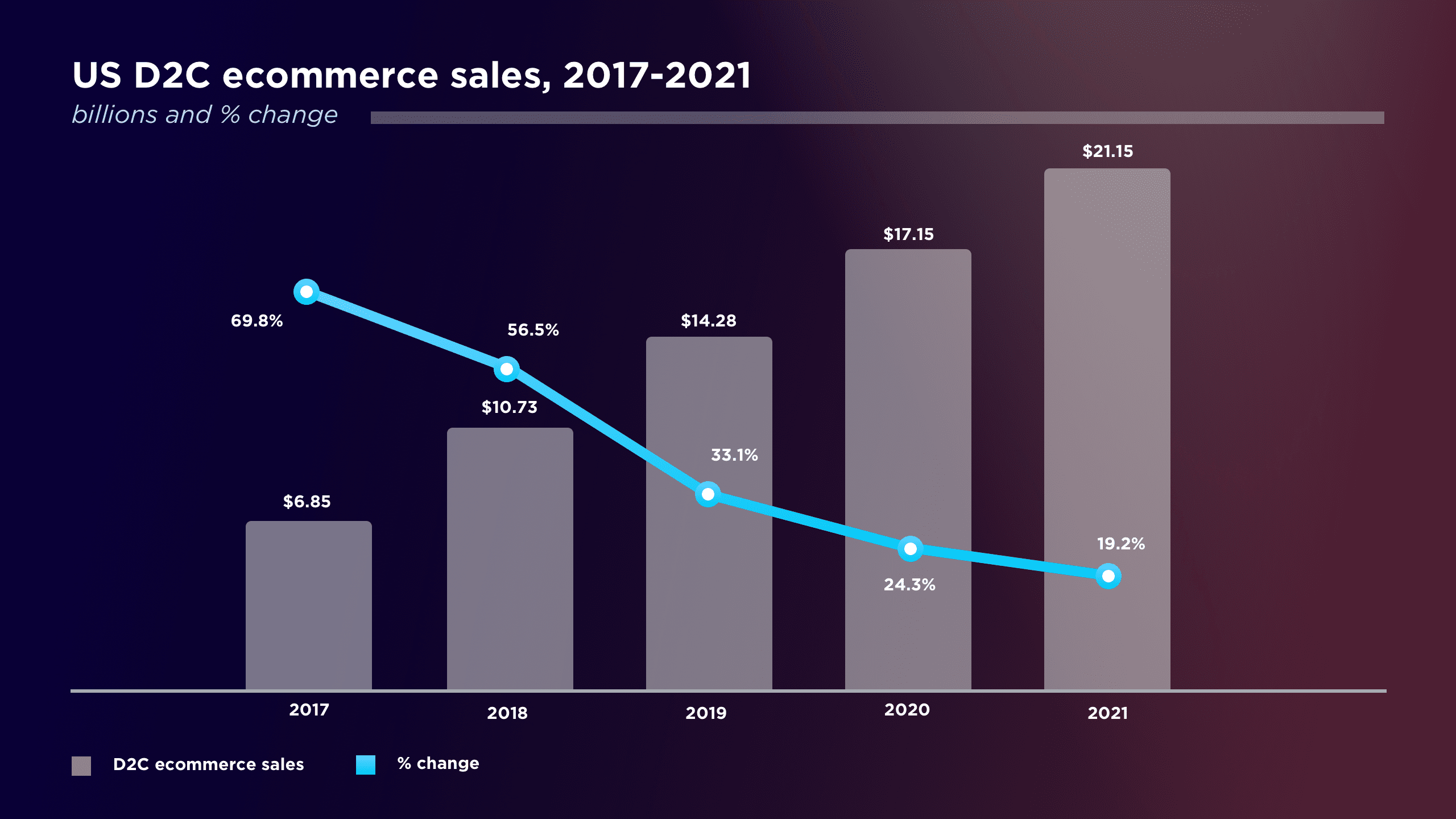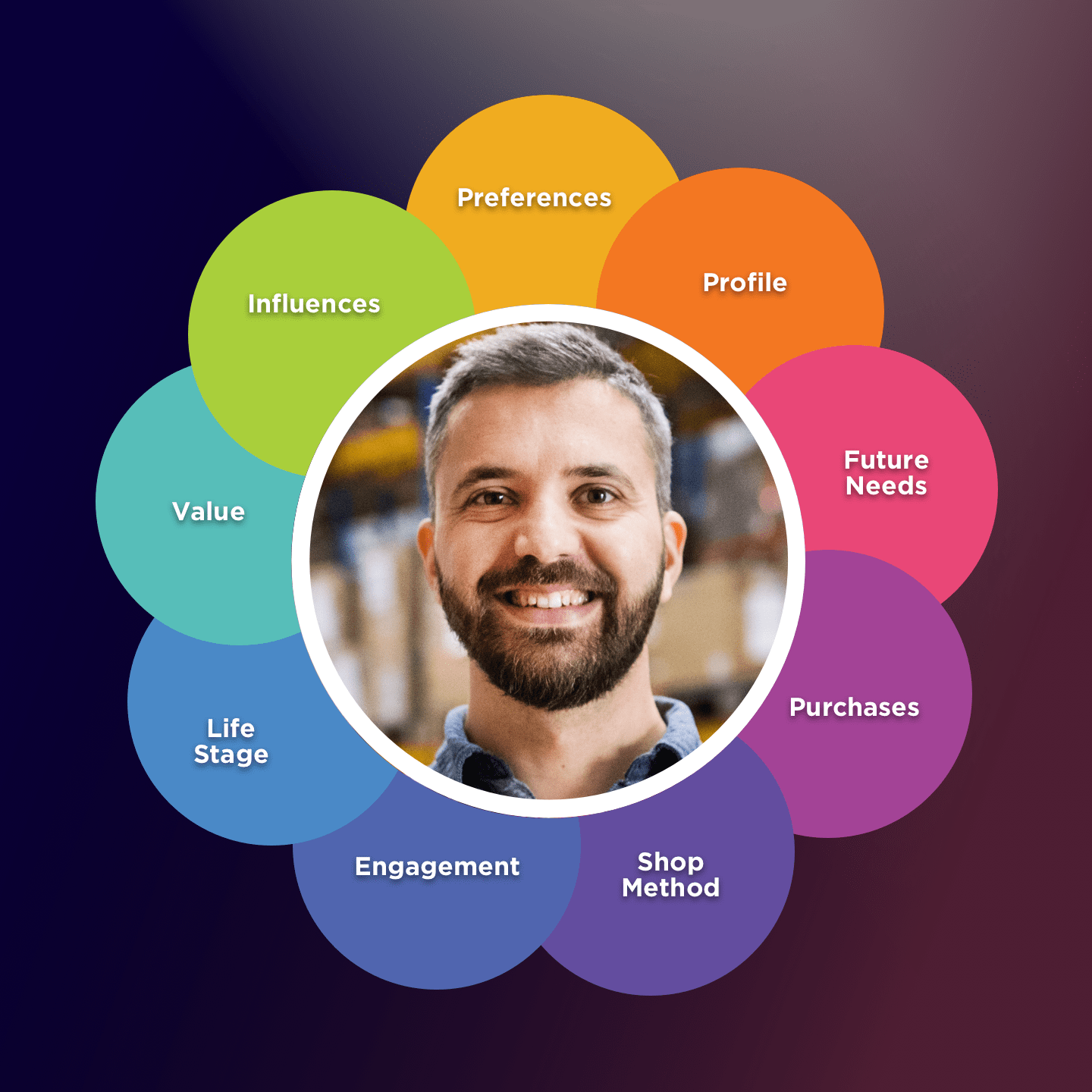Direct-to-Consumer (D2C), Digitally Native Vertical Brands (DNVB), and brand.com serve as
different variations of a similar concept that has blown up in the past few years fueled by factors ranging from a surge in online shopping, stay-at-home restrictions brought about by the pandemic, and a general shift in consumer behavior.

D2C sales were forecasted to account for $17.75 billion of total e-commerce sales in 2020, up 24.3% from the previous year, according to eMarketer. The Middle East might have been late in joining the party but the key players from across the board including brands that sold the traditional way via wholesalers and retailers or those that use online marketplaces such as Amazon and Noon, and the new brands entering this nascent market today are all realizing the potentials of communicating with and selling to customers directly.
The Middle East has one of the highest youth populations in the world with more than 28% of the residents aged between 14 and 29. This means that a great chunk of the population is inherently digital natives, who grew up with smartphones. These young tech-savvy consumers are more informed, are massively influenced by social media for their purchases, are more value and purpose-driven compared to the older generations, as a result of which are open to experimenting with newer brands that align with their ideas and ideologies.
This presents an opportunity for both traditional retailers as well as nascent brands to tap into their e-commerce potential and tailor their offerings to this new cohort of customers leveraging data to understand their individual needs by connecting and engaging with their customers. And the best way to “pivot” to the ever-evolving demands would be by adopting the D2C approach.
Some of the benefits of the D2C milieu in retail would be:

1. Complete access to customer data
Many retailers agree that data is the real differentiator in D2C retail. Using marketplaces like noon.com and Amazon to retail products is great because of the large customer base they have access to, but the downside is, these behemoth marketplaces own the customers and hence their data. The importance of data can’t be stressed enough, but a key use case of all that complex algorithm is that it empowers retailers to customize and personalize offerings to their customers. According to a study by InstaPage, 74% of customers feel frustrated when website content is not personalised. Not having control or access means, they are now crippled from the ‘ability to customize’.
2. Building direct connections with customers

Trust is a strong consideration for most consumers today. According to a PWC report, 60% of consumers in the Middle East shop online with companies they feel they can trust Gaining trust has proven to be an arduous task for retailers, who now must assure security and demonstrate high levels of education and awareness of their customers, which can only happen through direct connections, personal interactions, and consistent engagement. D2C brands are much better placed to respond to consumer demand to meet their expectations and more importantly address and resolve any grievances they might have.
3. Increasing margins by cutting out middlemen

Studies have shown that successful D2C companies have a gross margin of 50 – 85%, thanks to two components – effective customer acquisition and eliminating middlemen. Brands with their own unique value proposition, voice, channels and strategies come across as more authentic, and for the millennials and Gen Z, authenticity is the name of the game. Secondly, and perhaps more evidently, getting rid of distribution partners ends up saving costs for the company tremendously.
Also, e-commerce eliminates the high fixed distribution costs brands used to pay retailers for shelf space and replaces it with variable costs to list on their website or an e-commerce marketplace. However, one thing to keep in mind when listing on marketplaces is that digital channels provide transparency into pricing. And customers will be comparing the prices of your products against your competitors. That’s why it’s critical for D2C brands to benchmark their pricing strategies against their rivals to drive more revenue and margins by pricing products competitively. Want to know how? Read about how DataWeave’s AI-Powered e-commerce analytics solutions can help
4. Enables to expand presence

While the D2C approach is proving to be profitable, it also gives brands the flexibility to expand and enhance their presence. Nike would be a prime example of how it has aggressively expanded its presence offline and online since it announced a decade back about its Customer Direct Acceleration strategy. Over the years, Nike’s D2C sales have grown from 16% of the brand’s total revenue to 35% or $12.4 billion by the end of fiscal 2020. Undoubtedly, Nike’s e-commerce focus has been strong, but what they have also mastered is its digitally integrated concept stores that have taken in-store experience to the next level. Moreover, going the D2C way has given the brand more flexibility to build on its voice and purpose, which is reflected across all of its channels and touchpoints. As a result, Nike has been able to grow its presence in existing markets, and establish the brand in new markets by widening its e-commerce penetration and opening stores that helps build communities and serve as marketing fronts instead of merely being points of sale.
In the Middle East too, there are some strong players, that realized the benefits of D2C and are reaping the benefits now. The most prominent of them would be Huda Beauty, founded by makeup artist turned billionaire entrepreneur Huda Kattan. Beginning as a blog in 2010, Huda Beauty has fast become the number one beauty Instagram account in the world. Huda launched her brand into Sephora in the Dubai Mall in 2013 and has since expanded the range to include a vast array of beauty products. The brand has since had several record-breaking launches globally, with products now available worldwide on hudabeauty.com as well as retailers including, Sephora, Sephora in JC Penney, Harrods, Selfridges, and Cult Beauty. Equipped with a clear value proposition and an army of loyal customers, the company continues to grow as its founder continues to deliver on the brand promise and remains connected with her customers bypassing middlemen.
Also read how DataWeave helped Douglas, a premium beauty retailer in Germany go D2C when the pandemic forced them to focus on their ‘Digital First’ strategy.
Another example would be the popular eyewear brand, Warby Parker, a company that capitalized on technology, data, and strived to bring a solution to the market. It stepped into an industry that was criticized for being expensive, entered a market that was skeptical of purchasing online, and turned the whole situation around by going D2C. They designed their own frames and sourced their own raw materials, drastically bringing down the costs that would have been passed on to end consumers. They introduced virtual try-on that delivered accurate results turning customers into loyal consumers. And today, after six separate rounds of fundraising, the company is reportedly set to launch an Initial Public Offering this year.
The playing field in the Middle East is wide open and the appetite for brands that respect value, put people over profits, care about providing suitable, cruelty-free, and ethical products, and understand their customers is only growing. Brands with a robust infrastructure, the right technical know-how and technologies, expertise to manage data, and clear strategies are already on the right path to establishing a strong D2C platform.
Insights from DataWeave can help D2C brands make smart, competitive assortment, promotion, and pricing decisions amongst other things to improve the customer experience and drive e-commerce sales. Sign up for a demo with our team to know more.
Thank you for Subscribing - Team DataWeave
Book a Demo
Login
For accounts configured with Google ID, use Google login on top. For accounts using SSO Services, use the button marked "Single Sign-on".

